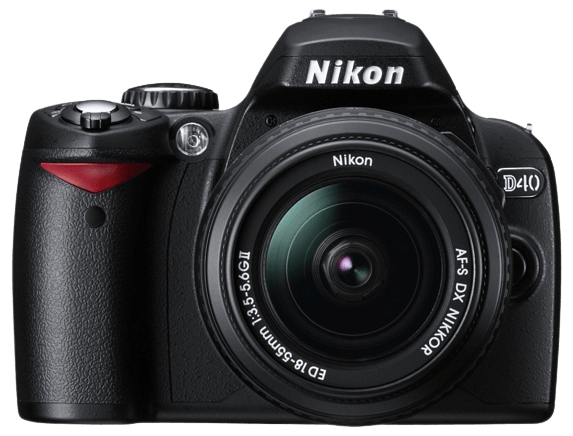Nikon D40 Specs and Scores

The Nikon D40 holds a score of 28/100, which is relatively low in today’s competitive market. Announced on November 16, 2006, this DSLR camera was released at a price of $400. The camera measures 124 x 94 x 64mm and weighs 522g or 1.15lbs, making it a compact and lightweight option for its time. However, considering the advancements in camera technology since its release, the D40’s specifications may not stand up to current expectations.
Nikon D40 Overview and Optics
The Nikon D40 receives a score of 33/100 for its optics. With a 6-megapixel resolution, the camera has a relatively low pixel count compared to modern cameras. Its shooting speed of 2.5 frames per second is considerably slower than contemporary models, limiting its ability to capture fast-moving subjects.
The D40 employs a CCD sensor, which is now considered outdated technology, as most current cameras use CMOS sensors. Its Nikon Image processing engine is responsible for processing the images taken. The DXOMARK sensor score of 56 is also quite low compared to newer camera models. The camera has an APS-C sensor size and a Nikon F DX lens mount, which allows compatibility with a range of Nikon lenses. However, the D40 lacks image stabilization, making it challenging to capture sharp images without a tripod or steady hand. The aspect ratio of 3:2 is standard for most digital cameras.
Given these specifications, the Nikon D40’s performance in today’s market is underwhelming. Its low megapixel count, outdated sensor technology, and lack of image stabilization make it less competitive among modern cameras. While it may have been a decent choice in the past, there are now numerous superior options available for photographers.
Nikon D40 Video Performance
The Nikon D40 lacks video capabilities. This camera only takes still images. No video functionality exists in the D40.
Nikon D40 Features and Benefits
The Nikon D40’s features score is a mere 17 out of 100, reflecting the camera’s basic offerings compared to modern options. This camera has a 2.5-inch screen with a resolution of 230,000 dots, lacking the clarity and size of contemporary camera screens. It does not offer a touchscreen, flip screen, GPS, WiFi, or Bluetooth capabilities.
In today’s market, the Nikon D40 falls short in the features department. The absence of a touchscreen, flip screen, and wireless connectivity options makes it less versatile and user-friendly than newer models. Its small screen size and low resolution also hinder the user experience, making image review and menu navigation more challenging.
The Nikon D40’s low feature score and outdated specifications make it a less desirable option for photographers seeking modern conveniences and advanced capabilities. It is essential to consider these limitations when evaluating the camera’s suitability for one’s needs.
Nikon D40 Storage and Battery
The Nikon D40’s storage and battery score is a low 27 out of 100. The camera has one memory card slot, accepting SD and SDHC cards. In today’s market, this is quite limiting as many cameras now offer dual slots and compatibility with a wider range of memory card types.
With a battery life of 470 shots, the D40 uses an EN-EL9 battery type and does not support USB charging. This battery life falls short compared to modern cameras that offer longer-lasting batteries and convenient charging options.
Considering these specifications, the Nikon D40’s storage and battery capabilities are not up to par with current standards. This may deter potential buyers who require more advanced features for their photography needs.
